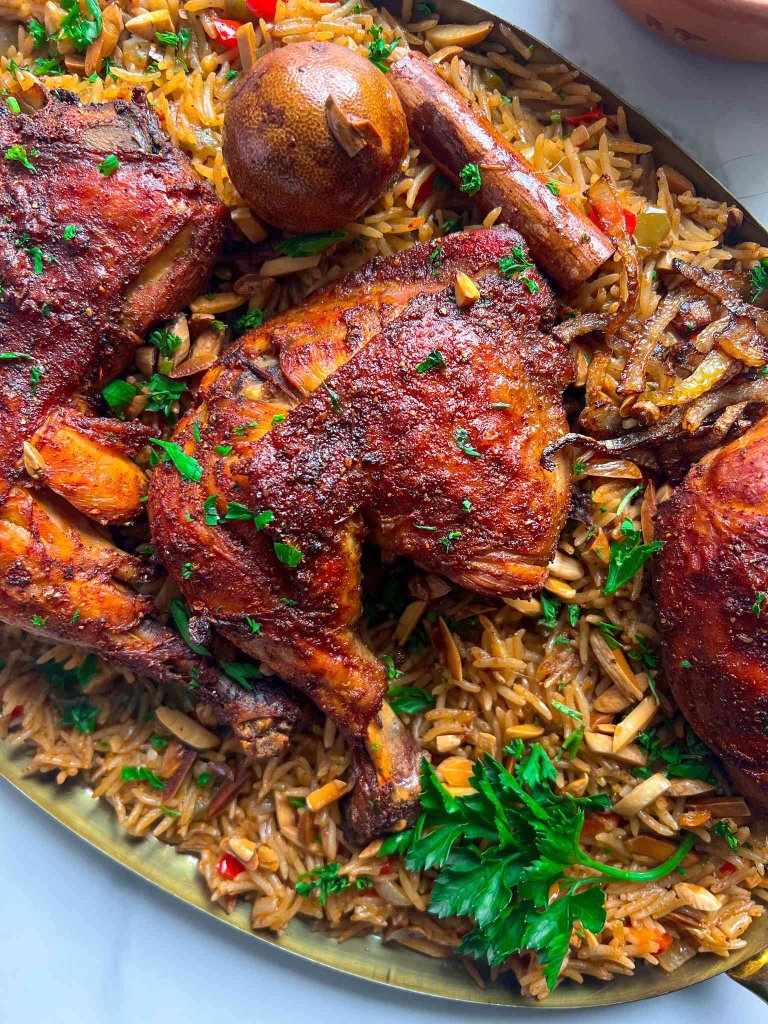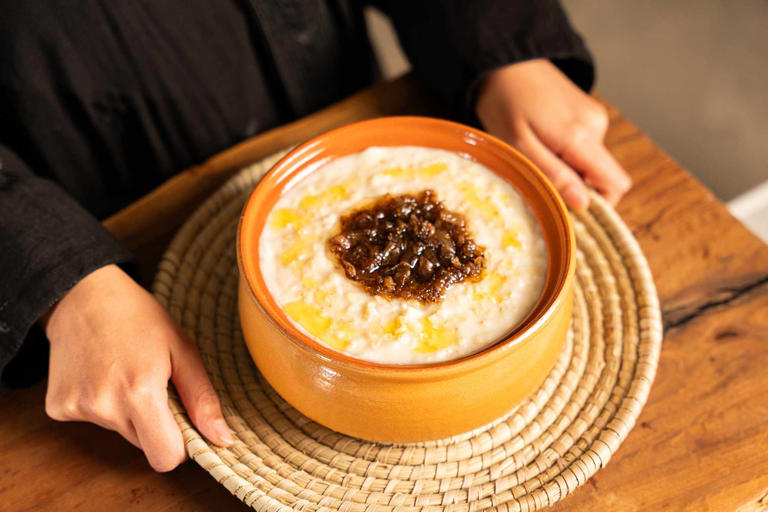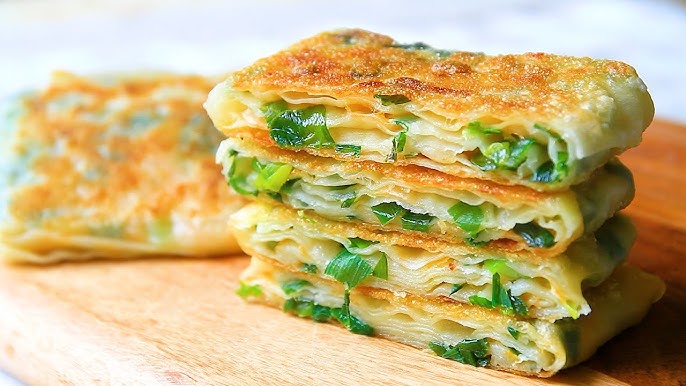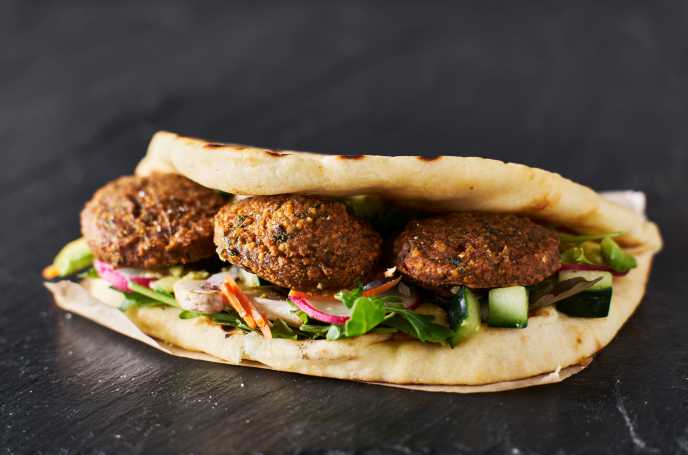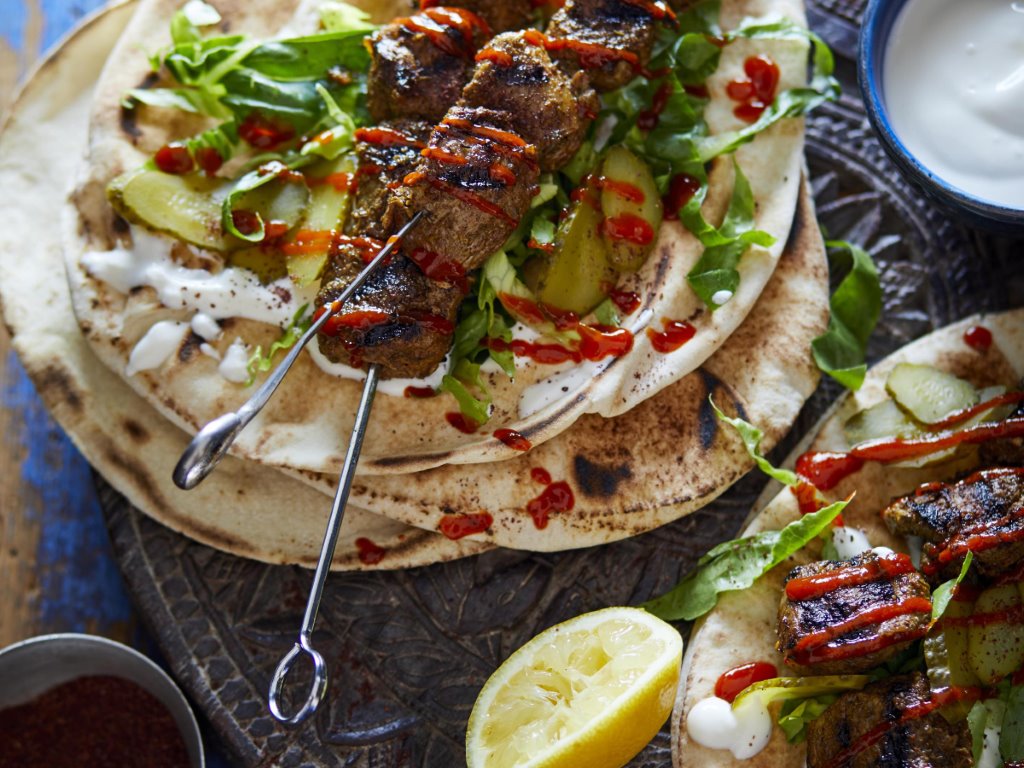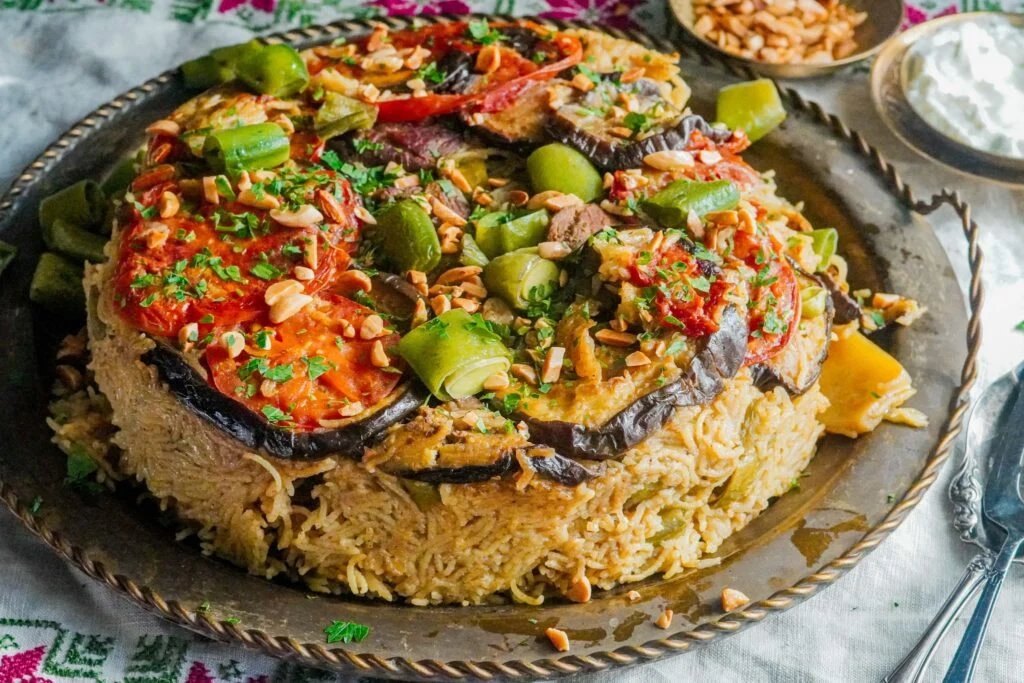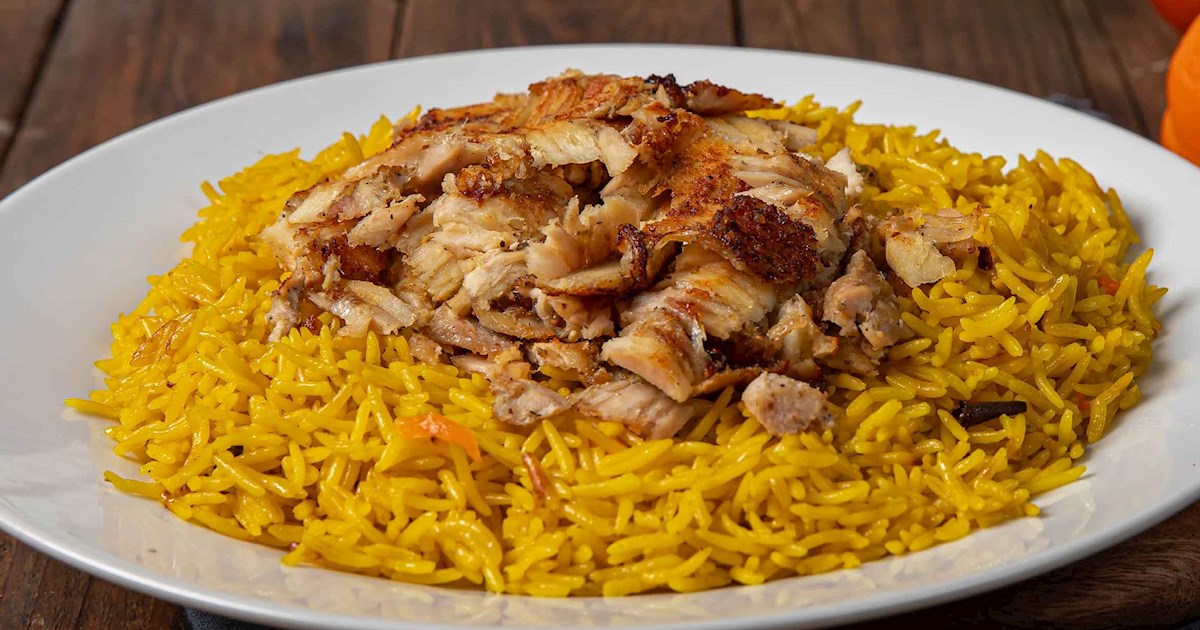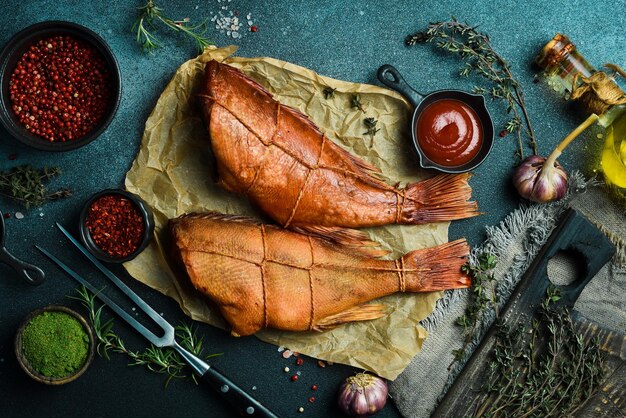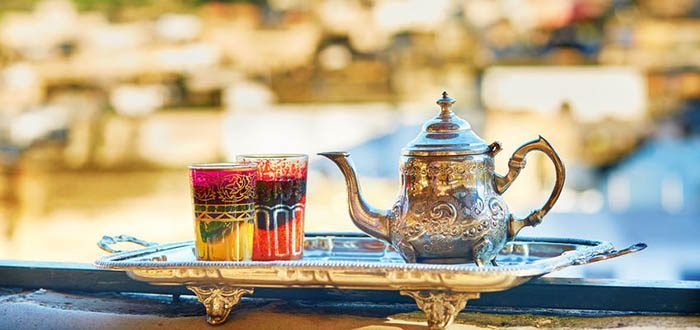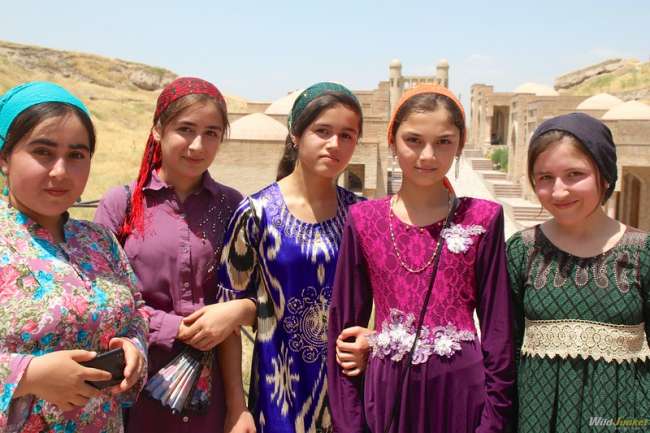Saudi Arabia’s culinary world is shaped by desert traditions, coastal influences, and generations of family cooking where recipes are passed down quietly, without written notes. The food here feels grounding and generous, built around the idea that a meal is something to be shared rather than rushed. When you travel through the country, you notice how central food is to daily life — people sitting together over large rice dishes, groups gathering in cafés for late-night tea, families visiting bakeries just before sunset, and street vendors preparing snacks with practiced ease that comes from doing it every day for years.
What makes Saudi cuisine especially memorable is how much personality it carries. Rice dishes are fragrant without being overpowering, slow-cooked meats fall apart with almost no effort, and even the simplest street foods are made with care. In coastal areas you find fresh seafood seasoned lightly and grilled to bring out its natural flavor, while in the central regions the focus is on warm spices and comforting textures. The country’s sweets are rich and welcoming, often enjoyed with Arabic coffee that has its own ritual and symbolism.
Travelers quickly realize that exploring Saudi Arabia through its food is one of the most enjoyable ways to understand the culture. Every dish tells a story, every region adds its own twist, and every meal becomes a moment where the country feels more familiar. Whether you’re eating in a traditional restaurant, sharing a platter on the floor, or trying something from a small street stall, the experience is warm, flavorful, and tied closely to local life.
Kabsa and Mandi
Kabsa is one of the most iconic dishes in the country. It’s made from long-grain rice cooked gently with chicken or lamb, seasoned with spices like cardamom, cloves, cinnamon, and dried black lime. The flavors sink into the meat as it cooks, creating a soft, fragrant dish that fills the table with a welcoming aroma. Many restaurants serve it on large platters meant for sharing, and it’s a favorite for gatherings and family meals.
Mandi has a similar structure but a different personality. The meat is cooked in an underground oven, giving it a smoky softness that separates easily with just a touch of a fork. The rice is lighter, less spiced than kabsa, and has a natural flavor that blends well with the meat. Restaurants that specialize in mandi often slow-cook the meat for hours, creating a tenderness that makes the dish memorable.
Jareesh and Harees
Jareesh is made from crushed wheat that’s cooked slowly with meat and mild spices until it becomes thick and creamy. It’s a comforting dish often eaten during winter or family gatherings. Its simplicity is part of what makes it appealing — the wheat absorbs the flavor of the broth and spices, creating a soft, warm texture.
Harees has a smoother consistency and is often made with chicken or lamb. It’s a common dish during Ramadan and special occasions, known for being filling and gentle in flavor. Both dishes highlight a traditional side of Saudi cooking centered around warmth, patience, and shared meals.
Mutabbaq
Mutabbaq is one of the most popular street foods in the country. It’s a thin stuffed bread folded over a savory filling of eggs, minced meat, vegetables, or a combination of all three. Vendors usually prepare it on a flat hot pan, folding the dough quickly and frying it until crisp. The result is a snack that’s crunchy on the outside and tender inside. Sweet versions also exist, sometimes filled with bananas or soft cheese for a different kind of treat.
Falafel and Samboosa
Falafel in Saudi Arabia is light and crispy, often served fresh from the fryer. It’s made from chickpeas or fava beans mixed with herbs, then fried until golden. Many people enjoy it with tahini sauce or tucked into bread with pickles and fresh vegetables.
Samboosa is another favorite, especially during Ramadan but found year-round. These small triangular pastries come filled with spiced potatoes, cheese, minced meat, or vegetables. They’re easy to eat, satisfying, and commonly shared at gatherings.
Shawarma and Grilled Meats
Shawarma is one of the most familiar foods for visitors. Thin slices of marinated meat roast on a vertical spit and are then wrapped in soft bread with garlic sauce, pickles, and vegetables. It’s a dependable meal for travelers, available everywhere and perfect at any time of day.
Grilled meats are just as popular. Kofta, kebab, and lamb chops are cooked over charcoal, giving them a smoky flavor that pairs well with fresh bread and simple salads. Many small restaurants prepare the meat right at the entrance, filling the street with the smell of grilling.
Maqluba
Maqluba is made by layering rice, vegetables, and meat in a pot, cooking everything slowly, and then flipping it upside down before serving so the ingredients form a tower. The vegetables — often eggplant, cauliflower, and potatoes — become soft and full of flavor, while the rice holds everything together. It’s a dish with a dramatic presentation and a comforting taste.
Bukhari Rice
Bukhari rice is a favorite among workers, families, and travelers looking for a meal that’s both affordable and full of flavor. The rice is cooked with carrots and mild spices, then served with grilled chicken that has a slightly charred, smoky taste. Portions are generous, and the dish is easy to find in almost every city.
Red Sea Seafood
Along the coast, seafood becomes a highlight. In cities like Jeddah and Yanbu, markets let you choose your fish and have it cooked on the spot. Popular dishes include grilled shrimp, fish cooked with garlic and lemon, and sayadia rice — a brown rice seasoned lightly and served with grilled fish. Eating near the water in the evening adds a calm atmosphere and a sense of place.
Desserts and Sweet Treats
Saudi desserts are rich and comforting. Kunafa is one of the most popular, made with crisp pastry on top and soft cheese or cream beneath, all sweetened with syrup scented with rose or orange blossom.
Luqaimat are small fried dough balls coated with honey or date syrup. They’re crunchy outside, soft inside, and often served warm. Dates are another essential part of Saudi life, offered in homes, shops, and cafés, with many varieties worth trying. Maamoul, a filled cookie, is often enjoyed with tea and makes a great souvenir to bring home.
Arabic Coffee and Tea
Arabic coffee has a light color but a strong aroma, flavored with cardamom and sometimes saffron. It’s poured into small cups and offered as a sign of welcome. Tea is just as common, usually brewed strong and served with mint, cinnamon, or cloves. In cooler regions, tea becomes part of evening gatherings, enjoyed outdoors as temperatures drop.
Saudi cuisine is full of dishes that reflect tradition, hospitality, and the natural flavors of the region. Tasting these foods during your trip gives you a clearer sense of the country’s character and the way people connect through shared meals. Each dish adds something different to the journey and helps turn your visit into an experience filled with warmth and memorable flavors.


